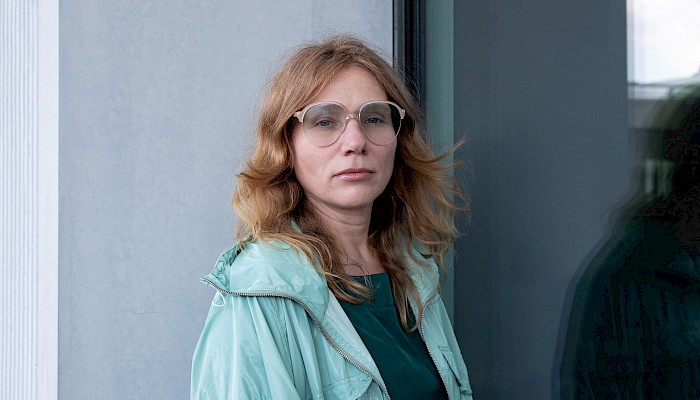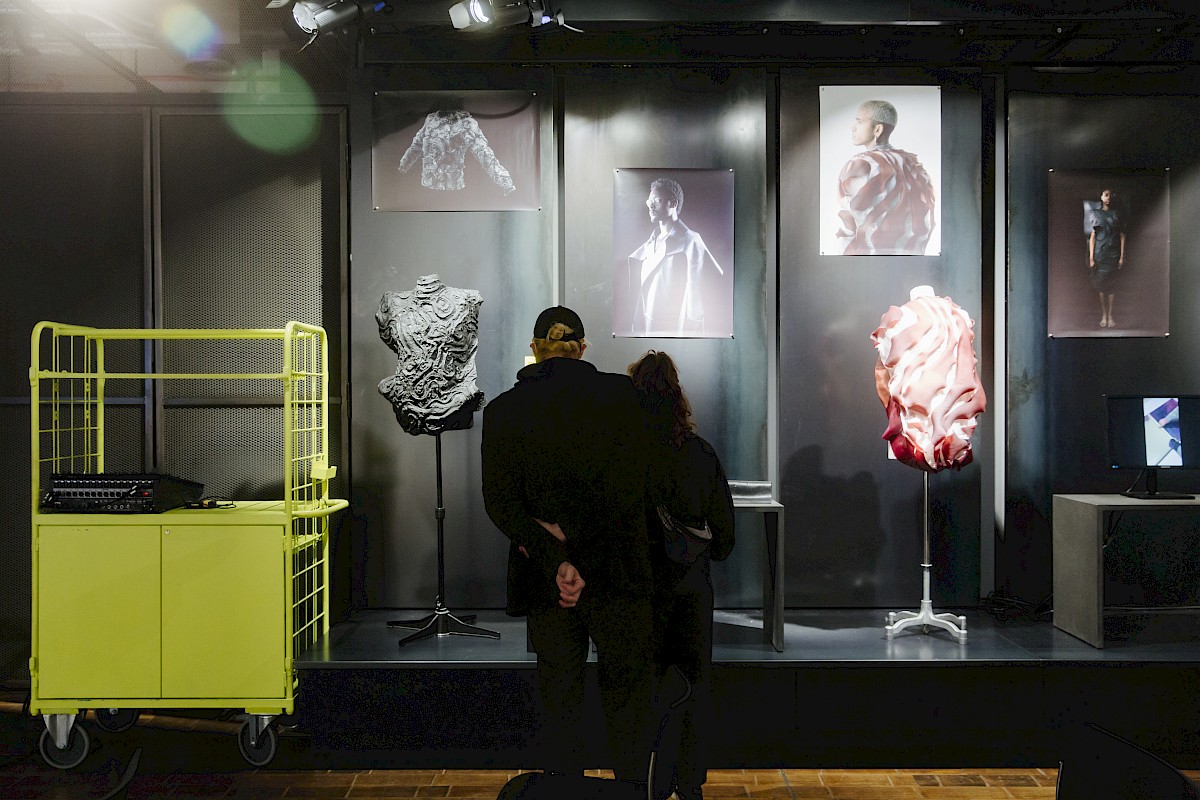
Bea Brücker is a fashion designer with a soft spot for a very special material. Her clothes are not made of silk or cotton, but of algae leather. We honoured Bea as part of the Silberstreifen Award 2021. She explains in an interview how she came to focus on biowear and technologies and why designers not only create products, but also bear social responsibility.
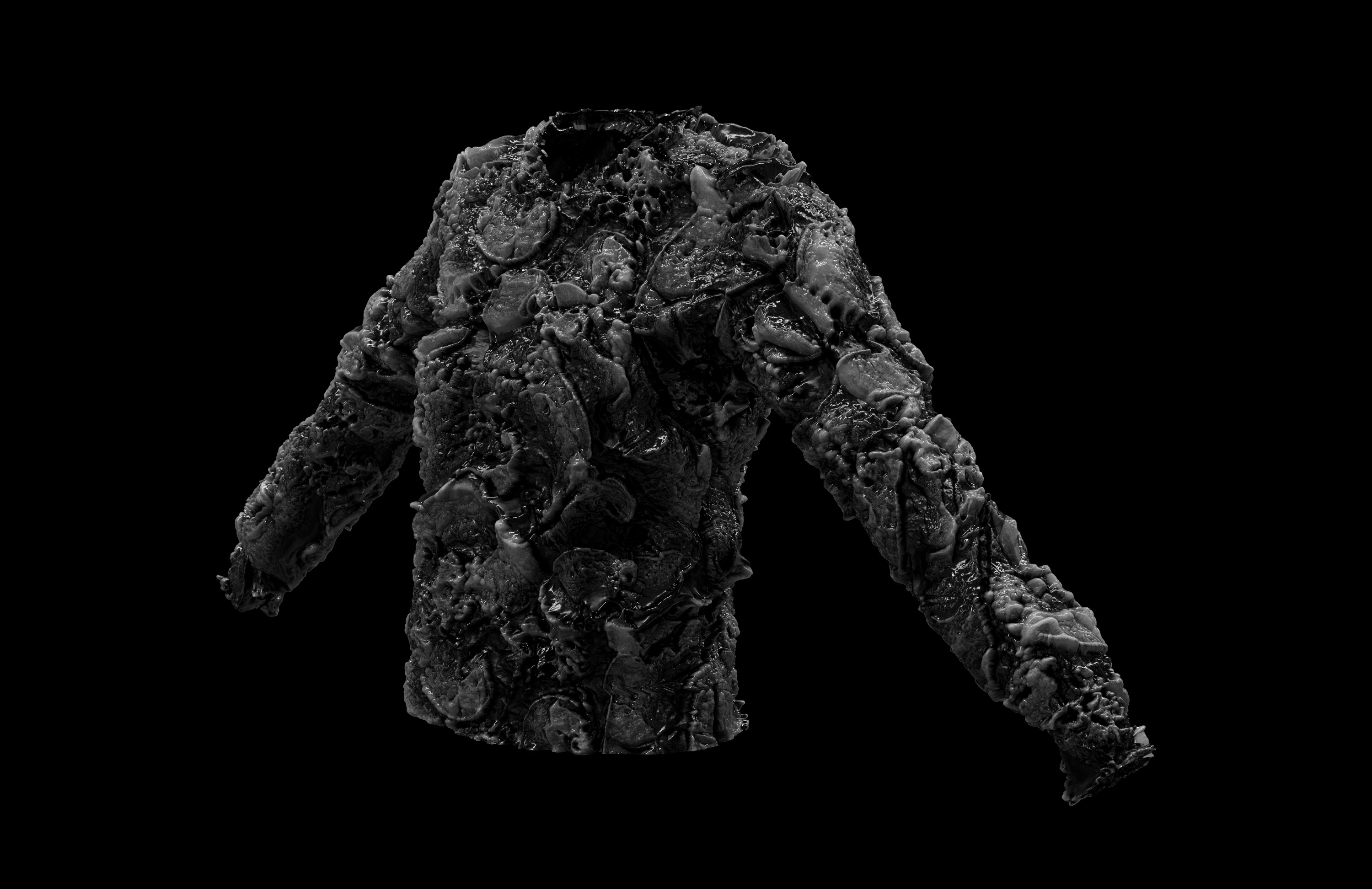
Isabel Neuendorf: What is Biowear?
Bea Brücker: In these design processes, biological systems are integrated and thus an attempt is made to create a new design practice. Not only the sewing machine but also petri dishes and breeding tanks are used to produce new bio-based and compostable materials. It is crucial to develop circular production to work with nature instead of exploiting it. Circular systems are everywhere in nature. It is not only about developing a new material, but also learning from natural cycles and translating them into fashion production. My goal is to integrate people into the design process when creating a socially and ecologically sustainable collection.
You completed your bachelor's degree at HAW Hamburg and then went to the Royal College of Art. How established is biowear and biodesign?
At the beginning of my bachelor's degree I had to explain a lot what biodesign is. That was one of the reasons why I went to London, where the subject is booming and you can network better in biodesign hubs. But it's still a niche. You have to fight more to be taken seriously. You don't have an established system for that.
Sentences like "It's always been like that" or "That's just how the industry works" are not used in biodesign.
Many labels advertise with circular economy or recycling in order to be perceived as more sustainable. Does greenwashing also affect biowear?
That is certainly a problem with sustainability advertising. Many say their designs are biodegradable, and when you look closer, sometimes it's only a few ingredients that are biodegradable. In addition, "biodegradable" is often used synonymously with "compostable" or "biobased", which makes greenwashing even easier.
Where exactly is the difference?
The sometimes very long period of time in which the biodegradable material decomposes, as well as the additional conditions (e.g. temperature & additional substances) that are needed for the decomposition process to start at all, are often not communicated. It is not uncommon for more harmful substances to be produced during decomposition than in the original material. In addition, there is often a lack of time and the necessary equipment, which is why many of these materials end up in the incinerator. This makes it all the more important to educate people about these things and create more transparency. I wanted to produce a material that you can quickly boil down and reuse or, if you have enough of it, use as fertiliser. For this, it was important to me that it is completely compostable and does not require additional energy input or leave pollutants behind.
How did you come across algae leather?
For a long time I wanted to develop my own material, which could be produced in several parts of the world without using fresh water. I started with acetic acid bacteria, which are still part of my work today. Over time, I found the properties of algae more and more exciting: they are the air purifier par excellence. However, algae are also responsible for dead zones in the sea. Due to over-fertilisation in agriculture, too much fertiliser gets into the water. This causes too many algae to grow and creates dead zones where nothing can live at all. Because there is an overpopulation of algae, I was particularly interested in it as a resource.

How does algae leather feel?
Algae leather feels like leather, even though it is not meant to be a leather substitute. It can be made into different materials with different properties. It can feel like sturdy or very supple leather, like hard rubber or even like plastic. The texture depends on how I mix the materials in production.
What are you working on at the moment?
I am currently planning a unified production system that will allow me to produce my fashion locally. We are developing a design tool whose algorithm is based on biological systems. The goal is to allow everyone to co-design their own clothes to a certain extent. We are also working on machines that simplify the processing of the algae leather.
How do you understand your role and responsibility as a designer?
Especially in fashion design studies, design is seen from a narrow definition. Many think it is "only" about developing clothes. That's usually what you do. Nevertheless, you have a wide scope as a designer.
What do you mean by that?
For me, it's about being aware as a designer of the attitude I take through my design. That's why it was important for me to learn a lot about the industry and ask questions: Who am I designing for? What does it mean when I exclude certain genders through a collection? What is the political framework in which I design? What is the supply chain like? What is the political situation in the countries I source materials from?
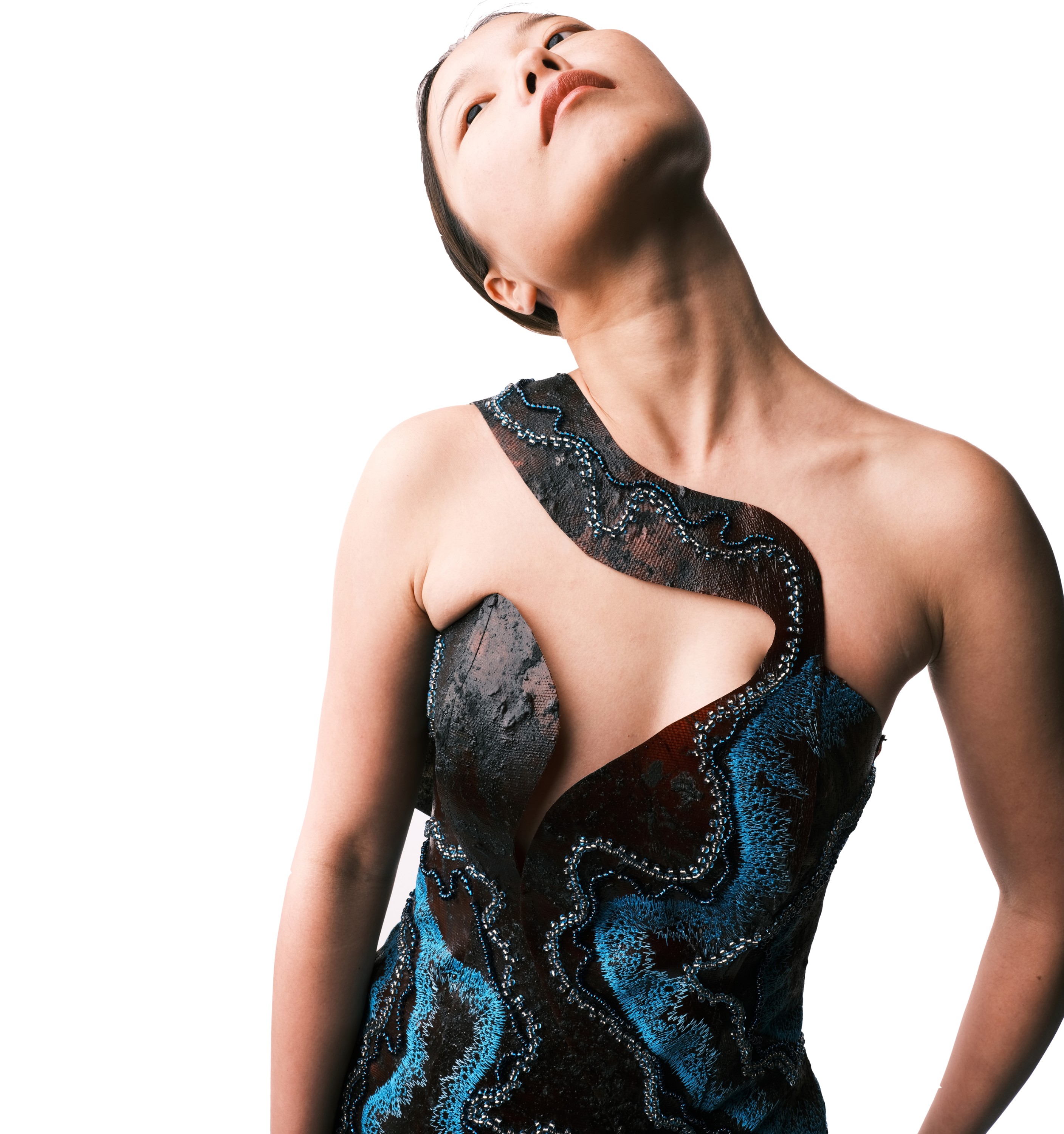
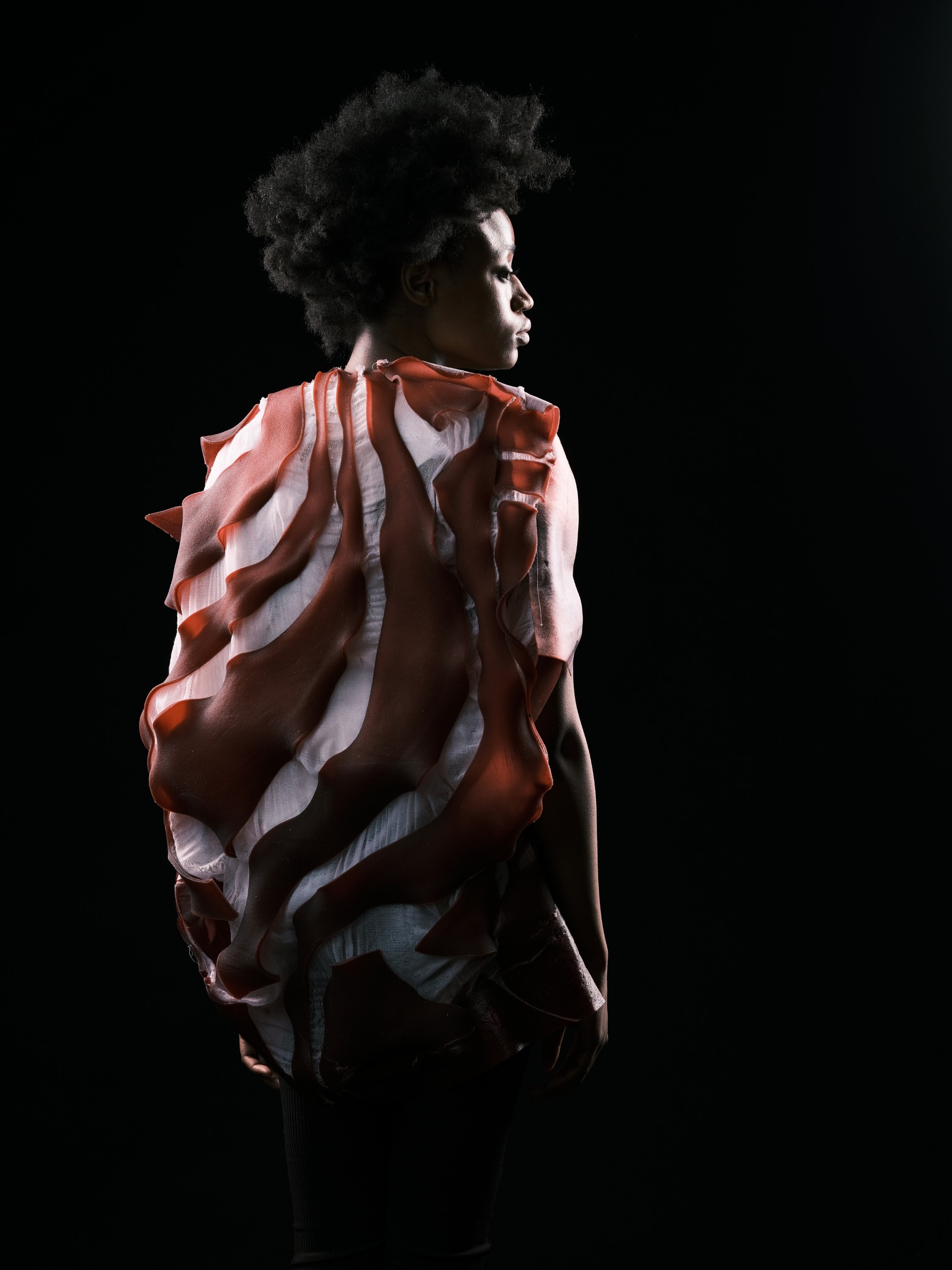
Can biowear and biodesign help us to overcome the climate crisis?
For the time being, the earth doesn't care if I'm wearing a jacket made of algae leather. Because of the air-cleaning effect of the material, it might be good for the room I'm in, but many more people would have to wear this material for it to have an effect on fine dust pollution. However, I am convinced that biowear and biodesign have great potential to transform the industry to create a sustainable future. But much more economic change is needed if we want to stop the climate crisis.
You mentioned how much studying design shapes one's understanding as a designer. What would you wish for future students in fashion?
I would like to see the term fashion design open up more. In parts there is a kind of gatekeeping in the education. Sometimes I hear from lecturers: "That's not fashion, that's costume design or that's art
We need more openness and support for new ideas and cooperation. The future can only be solved in an interdisciplinary way.
What bothers you about that?
The future can only be thought of in an interdisciplinary way. We can only find solutions to the current problems in the world by working together and opening ourselves to new ideas. We can't go on as before. Fashion design is not only about technical drawings and sewing. We need more openness and encouragement for new ideas and collaborations. Also for students. It would be great to see more colleges from design joining forces and working with biologists, engineers and computer scientists, for example.
Want to know more about Bea Brücker? At Instagram and on her Website she regularly shares updates and gives insights into her work.
Photos: Photography Johann Spindler, Models: Kaiden Ford, Esther Durotolu, Karjai Lisbie
More design

Playspace: New play spaces and meeting places in public space
Modular design by Anna Ulmer.
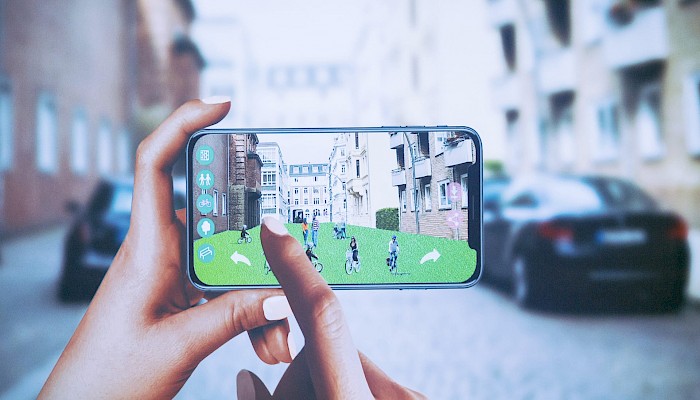
Visual Utopias: The World without Automobile Transport
Communication designer Jan Kaminsky makes cars fly and digital trees grow.
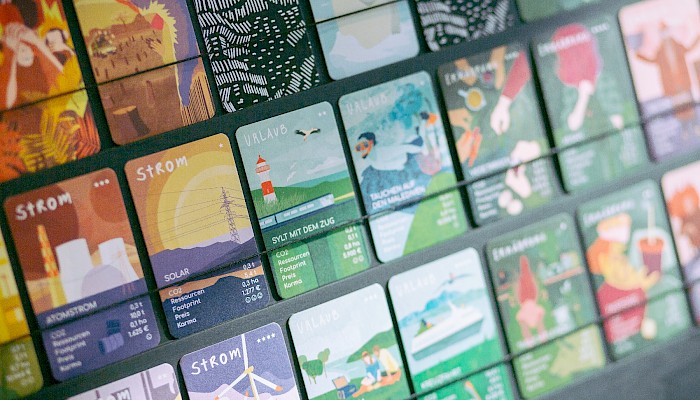
Playfully saving the world with design
How Carmen Gloger makes this possible with the Climate Quartet.
